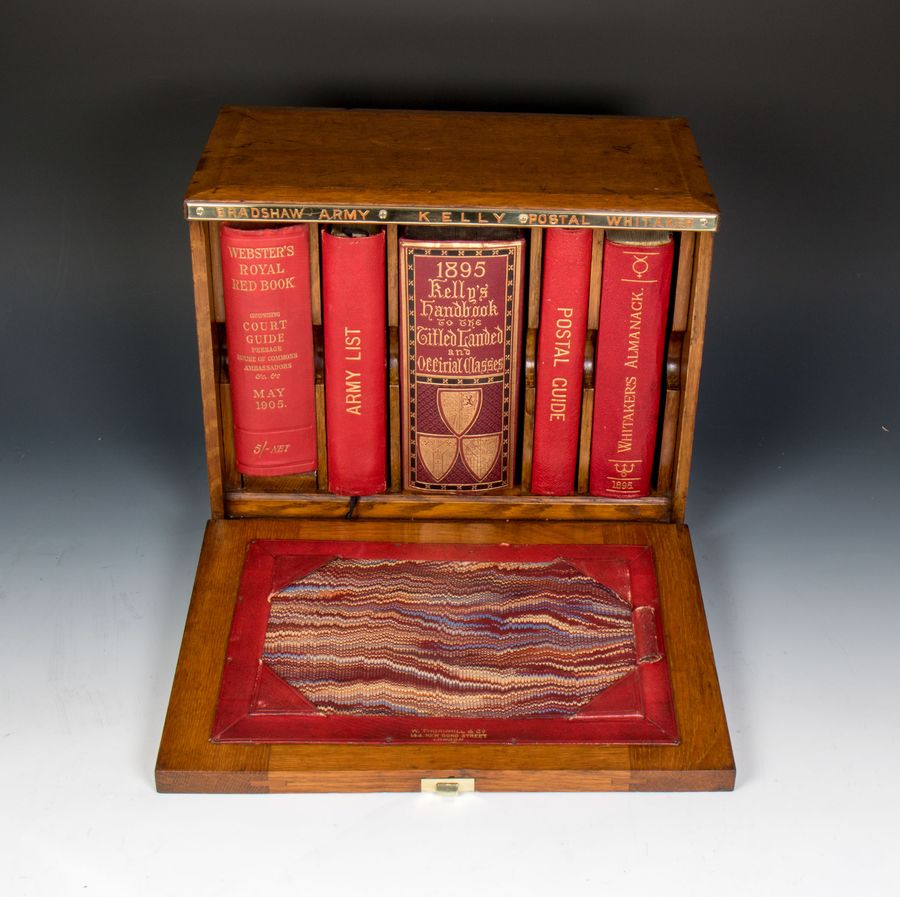featured item

exceptional quality antique victorian oak marquetry strun... Read more
#10238 a black leather despatch box 'vice admiral sir rosslyn e wemyss'
- View other items in:
- antique boxes
- dispatch boxes
gerald mathias fine antique boxes
Enquire about this antique
Gerald Mathias Fine Antique Boxes has 32 antiques for sale.
click here to see them all
Peck & Son, Nelson Square Blackfriars Mnfrs. to HM Stationery Office
Wemyss was the senior British representative at the signing of the armistice that ended active hostilities in the war. (please see the last picture. Wemyss is seated third from the right). It was Wemyss who made the decision, much to the anger of British Prime Minister David Lloyd George, to have the ceasefire to come into effect at 11.00 a.m. Lloyd George wanted it to take place at 2.30 p.m. so that he could make the announcement in the House of Commons. Wemyss realised that 11 a.m on the 11th day of the 11th month had a strong, poetic quality about it; besides, by 2.30 p.m. more soldiers could be unnecessarily killed. After attending the Paris Peace Conference as Britain's naval representative and arranging for the end of the food blockade and hence unblocking the negotiations, Wemyss resigned in November 1919 following persistent calls for Sir David Beatty to be given his job 29] It was Wemyss who made the decision, much to the anger of British Prime Minister David Lloyd George, to have the ceasefire to come into effect at 11.00 a.m. Lloyd George wanted it to take place at 2.30 p.m. so that he could make the announcement in the House of Commons. Wemyss realised that 11 a.m on the 11th day of the 11th month had a strong, poetic quality about it; besides, by 2.30 p.m. more soldiers could be unnecessarily killed. After attending the Paris Peace Conference as Britain's naval representative and arranging for the end of the food blockade and hence unblocking the negotiations, Wemyss resigned in November 1919 following persistent calls for Sir David Beatty to be given his job It was Wemyss who made the decision, much to the anger of British Prime Minister David Lloyd George, to have the ceasefire to come into effect at 11.00 a.m. Lloyd George wanted it to take place at 2.30 p.m. so that he could make the announcement in the House of Commons. Wemyss realised that 11 a.m on the 11th day of the 11th month had a strong, poetic quality about it; besides, by 2.30 p.m. more soldiers could be unnecessarily killed. After attending the Paris Peace Conference as Britain's naval representative and arranging for the end of the food blockade and hence unblocking the negotiations, Wemyss resigned in November 1919 following persistent calls for Sir David Beatty to be given his job
Antiques.co.uk Ref: 7EHRRK4MF
- Width (cm):
- 41
- Height (cm):
- 15
- Depth (cm):
- 28
Please note that this price may NOT include delivery charges which the seller may charge extra for.
Gerald Mathias Fine Antique Boxes
Gerald Mathias Fine Antique Boxes. I have been a dealer at Antiquarius in the Kings Road for more than twenty five years until 2006 when I moved to The Old Cinema in Chiswick and continued specialising in Fine Georgian, Victorian & Edwardianhttps://www.antiques.co.uk/antique/10121-A-Victorian-Black-Leather-Despatch-Box-The-Private-Secretary & antique leather boxes. My stock includes Country House Post Letter Boxes, Writing Boxes, Despatch Boxes, antique jewellery, Victorian office, & Desk & antique Library accessories.
Contact details
Flat 71
Homecross House
21 Fishers Lane
Chiswick
Greater London
W4 1YB
UNITED KINGDOM
T: 07927534899
E: gm@geraldmathias.com
W: www.geraldmathias.com
Other antiques available from gerald mathias fine antique boxes
-
![#10204 EIIR Red Canvas Despatch Box ‘Home Secretary’]() £12500.00
£12500.00#10204 eiir red canvas despatch box ‘home secretary’ Read more
-
![#10228 Victorian Leather Despatch Box : Rt. Hon. E. Marjoribanks M.P]() £1500.00
£1500.00#10228 victorian leather despatch box : rt. hon. e. marjo... Read more
-
![#9675 W. Thornhill & Co. Oak Cased Set of Reference Directories dated 1895.]() £850.00
£850.00#9675 w. thornhill & co. oak cased set of reference direc... Read more
-
![10226 An Edwardian Army & Navy Oak Country House Post Letter Box]() £895.00
£895.0010226 an edwardian army & navy oak country house post let... Read more
gerald mathias fine antique boxes
Gerald Mathias Fine Antique Boxes has 32 antiques for sale.
click here to see them all






















